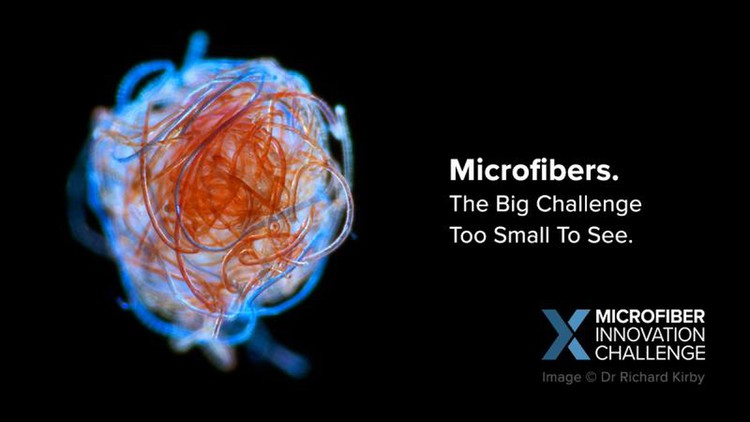
The Challenge is a call for upstream innovations that replace plastic in textiles and/or prevent microfiber shedding by 1) replacing textiles that are sources of plastic microfiber with replacements or 2) preventing/ developing improved textile manufacturing processes to decrease microfiber shedding.
Twelve innovative solutions for addressing plastic microfiber pollution have been selected as finalists with a chance of winning a share of $650,000 as part of the Conservation X Labs (CXL) Microfiber Innovation Challenge.
Millions of tiny fibers shed when we wear and wash our clothing, and these contribute to an estimated 35% of the primary microplastics released into our oceans and waterways according to a 2017 report by IUCN. Stopping microfiber pollution requires a significant transformation in textile and clothing production processes.
The Microfiber Innovation Challenge is supporting solutions that will halt microfiber pollution, an increasing threat to human and planetary health. The Challenge invited scientists, engineers, biologists, entrepreneurs and innovators across the world to submit applications showing how their innovations can solve the issue at the source, receiving submissions from 24 countries.
The finalists were decided by external panels of experts drawn from across the sustainable apparel industry, microplastics research experts, and innovation accelerators. Innovations were judged on feasibility, potential for growth, environmental impact, and the novelty of their approach.
They are:
-
AlgiKnit, Brooklyn, NY – Eco-conscious, renewable yarns derived from kelp seaweed, one of the most regenerative organisms on the planet.
-
AltMat, Ahmedabad, India – Alternative materials that repurpose agricultural waste into versatile and high-performing natural fibers.
-
KintraFibers, Brooklyn, NY – A proprietary bio-based and compostable polymer that is optimized for synthetic textile production, providing apparel brands with a strong, soft, and cost-effective cradle-to-cradle material.
-
Mango Materials, Oakland, CA – This innovative manufacturing technology turns waste carbon emissions into biodegradable biopolyester fibers.
-
Nanoloom, London, UK – Fibres and fabrics for apparel from BioHastalex, a novel and unique material using graphene, that is non-toxic, biodegradable, recyclable, does not shed and can be waterproofed without additives, in addition to inheriting graphene’s ‘wonder’ material properties in being incredibly strong and lightweight.
-
NFW® (Natural Fiber Welding), Peoria, IL – Bonding networks holding natural fibers together are engineered to control a yarn’s form and enhance fabric performance features including dry time and moisture-wicking ability.
-
Orange Fiber, Catania, Italy – This innovation incorporates a patented process to create sustainable fabrics from the by-products of citrus juice.
-
PANGAIA x MTIX Microfiber Mitigation, West Yorkshire, UK – A novel application of MTIX’s multiplexed laser surface enhancement (MLSE®) technology modifies the surfaces of fibers within a fabric to prevent microfiber shedding.
-
Spinnova, Jyväskylä, Finland – Mechanically refined wood or waste is turned into a textile fiber without any harmful chemicals in the manufacturing process.
-
Squitex, Philadelphia, PA – This innovation uses genetic sequencing and synthetic biology to produce a unique protein structure originally found in the tentacles of the squid.
-
TreeKind, London, UK – A new plant-based leather alternative made from urban plant waste, agricultural waste and forestry waste that uses less than 1% of the water compared to leather production.
-
Werewool Fibers, New York City, NY – This innovation involves using biotechnology to design new fibers with specific structures that mimic aesthetic and performance properties found in nature.
